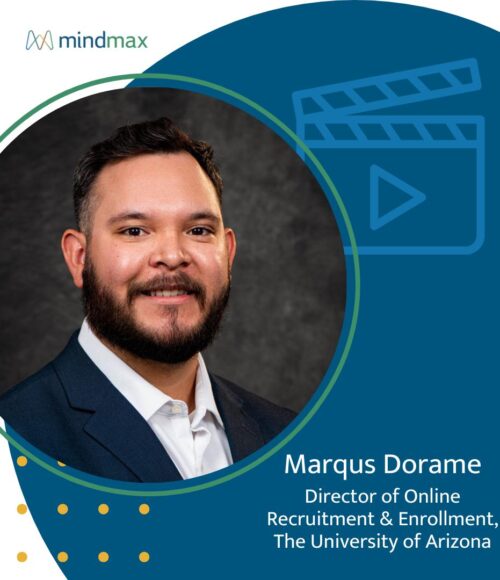How to Grow Noncredit Program Enrollments (It’s Not What You Might Think)
How to Grow Noncredit Program Enrollments (It’s Not What You Might Think)
Noncredit programs… trend or wave of the future? With the changing educational market and ‘Google’ era of getting information, noncredit programs have become a critical piece of the learning puzzle. It’s not just about degrees anymore – the ability to learn, relearn, and adapt has become critical to success in one’s professional and personal life.
Even more, noncredit programs have the potential to provide significant value to students as well as high-margin revenue to a university.
What’s the secret to growing enrollments for noncredit programs? It’s not what you might think.
It’s not… top-notch ad creative, expert marketing analytics, or even best-in-class curriculum. While those things don’t hurt, my experience in leading enrollment goal-exceeding noncredit programs for MindMax’s partner schools is empathy.
I know, I know. Empathy isn’t what comes to mind, but think about this: noncredit programs can be just as challenging and rigorous as credit programs, so taking one needs to be worth it for the student. Students choose noncredit programs for a variety of reason; ranging from exploring a hobby to retooling their skills, to professional designation in their career, to career advancement, or to even a complete career change.
Only when a school is truly empathetic and puts themselves in the student’s shoes, can they create the right value message that speaks to their ideal student.
Let your empathetic approach drive the marketing messaging and enrollment management throughout the entire strategic enrollment process, and use these questions as guides:
- Who is the ideal student for this program?
- What is the core motivation for this student?
- What does this student value most?
- What will compel this student to take action?
Now you know what to ask, here are my recommendations for collecting this information:
Survey current students and alumni
Current students and alumni are your best sources of information. Take the time to survey, interview, and meet with students and alumni. The goal is to discern what motived them to take action when they did, why they chose the program and university.
Research the industry
Find out as much as you can about the program’s related industry. For example, if the noncredit program is related to financial services, research the growth trajectory of the field, whether a professional certification is required, and what impact market conditions or legislation might have.
Further, what is the salary potential or impact for completing the noncredit program or professional designation? The goal is to figure out why someone in this industry would bother to take the noncredit program. Most commonly, it’s for career advancement, higher salary potential, or the ability to transition mid-level to a different career.
Conduct competitive analysis on similar non-credit programs
Again, do your research to find out the following about competitive programs: enrollment numbers, their value messaging, completion rates, and tuition.
Test, test, adjust, and test again
Look at your data. Which ads perform best? Which email subject lines got the most opens? How engaged are prospective students with your content and your website? But don’t stop there – figure out the story behind the data, like how a student learned about your program, chooses your program, enrolls, and successfully completes it.
For more information about how MindMax helps schools increase their noncredit enrollments, visit our Services and Solutions page on the site.
How I lived, saw or experienced one of MindMax’s values this month
Get Results – Learn Always – Align to Mission – Build Meaningful Relationships – Ask for Help.
“Align to Mission” is a value I think is critical in every engagement at MindMax. It’s evident in almost everything we do. Frankly, if an initiative isn’t aligned to the mission, it’s likely not worth doing. With every university partner, I see myself as an extension of the university and responsible for representing its mission, goals, and brand in all aspects. Sometimes it’s the detailed attention to how we respond to student requests via chat, phone, and email. And other times it’s big picture strategy as in how we structure the curriculum and communicate the value to help ensure student success.
Related Ideas
Melissa Maybury Lubin Wants Higher Ed to Be Affordable, Accessible, and Achievable

Marqus Dorame Advocates for Student-First Recruitment
